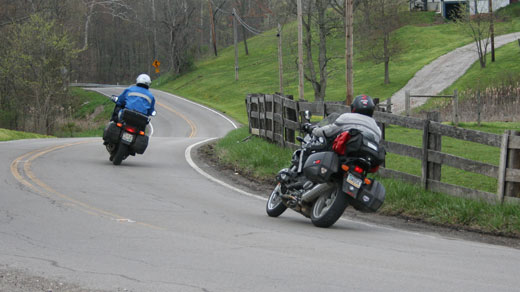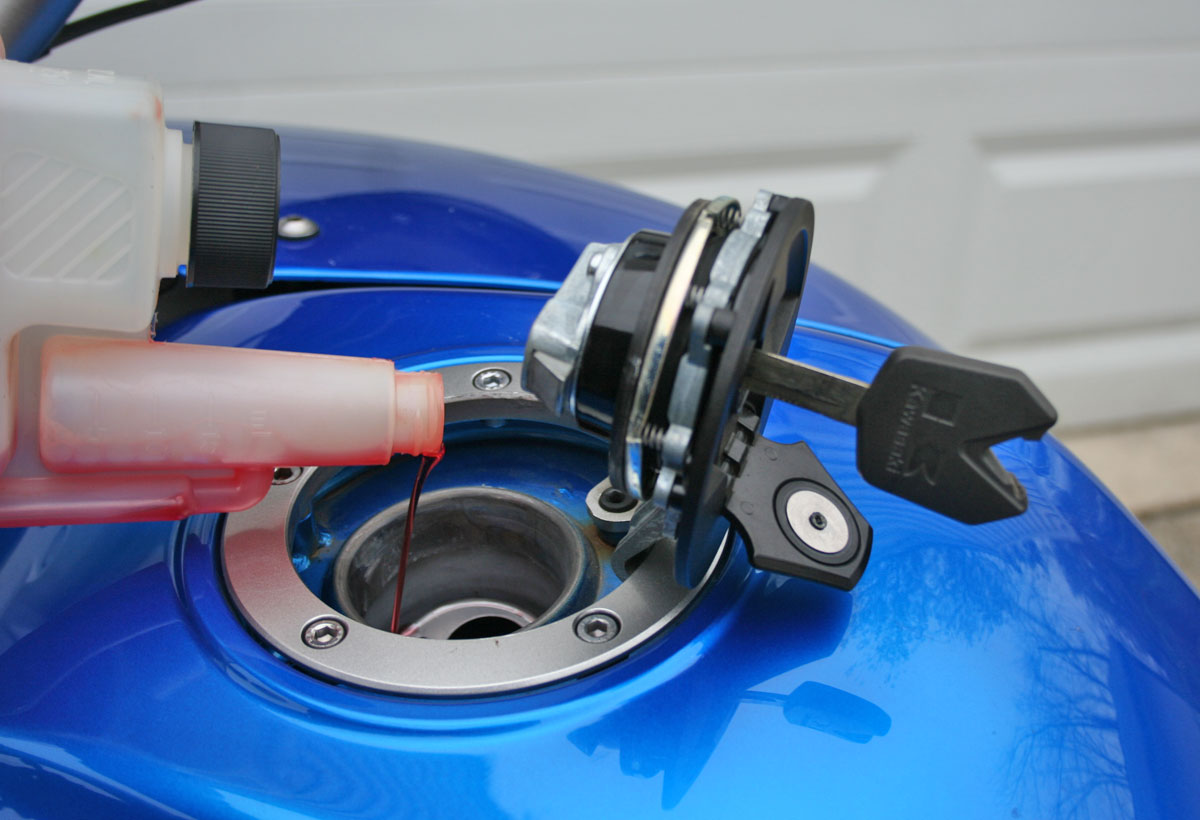
As soon as winter breaks, you know you’re going to want to go for a ride. Will your motorcycle be ready?
If you live as far from the equator as I currently do, you know how you feel when that first nice day of spring comes around and you really, really want to go for a ride. A real ride, one that involves fun and traction, not multiple layers of clothing, shivering, and slippery roads.
How quickly you can take advantage of that nice day depends primarily on what you did when winter first hit. To uncover the truth of the matter, answer this simple quiz.
After the last time you rode your bike, you:
A) Added fuel stabilizer to the gas tank and topped it off; washed, dried and waxed the bike; lubed any control cables that needed attention; attached a maintenance charger to the battery; stuffed rags in the air intakes and the exhaust.
B) Felt a tire going flat; skidded the bike into the garage broadside; leaned it against the garage refrigerator and figured you’d deal with it later; didn’t deal with it later.
I’m sure you already know where this is going.
If you answered A, congratulations. Make a quick check of tire pressures and look for any signs of cracks or hardening of the rubber, give critical fasteners a once-over, check fluid levels, remove the rags (you put them there to keep small varmints from hibernating in your airbox or exhaust, remember?) and disconnect the battery charger. Most likely, the engine will fire and run smoothly and you’ll be on your way in minutes.
If you answered B, you probably have some work to do before you enjoy that ride. Maybe a lot of work.
First, inflate both tires and check for flat spots and cracking of the compound. Parking by the fridge was a bad idea, by the way. Ozone produced by electric motors can damage the rubber compound in the tires.
Next, since you didn’t clean the bike before abandoning it – sorry, I mean “storing” it – after your last ride, you should check thoroughly for corroded fasteners, especially on the brakes. Put the bike up on stands and ensure that the wheels spin freely and the brake calipers work smoothly and don’t stick. If you dumped your bike in the garage with a wet and dirty chain and let it sit for a couple of months, you will probably have a tight spot in the chain. Spin the rear wheel and see if the free play in the chain changes. An extra soaking of chain lube may solve a minor problem. Bigger problems may force you to buy a new chain. Don’t forget to lubricate control cables, too. A snatchy throttle is no way to start the riding season.
Move on to the battery. Check for corrosion on the cables, make sure the connections are tight and, if it’s not a sealed battery, check the fluid level. Check the charge with a volt meter. You should see at least 12.6 volts on a conventional battery or 12.8 for a sealed battery. If you let the battery drain over the winter, it will need a charge. If it won’t hold a charge, it’s time to replace it.
Now on to the most common cause of frustration for those who want to ride but their motorcycles are unwilling. Because you didn’t put fuel stabilizer in the gas tank, some of the mixture of chemicals in your gasoline evaporated, leaving behind substances that gum up small openings like varnish. If your motorcycle has fuel injection, sometimes the pressure of the system is enough to blow gasoline right past the partial blockages of the tiny openings in the fuel nozzles. Riding the bike may well cure minor issues, especially if you add some fuel treatment.
Problems are more likely on carbureted motorcycles, however. The smaller the carburetor jets, the greater the odds that they are gummed from deposits left by old fuel and your engine won’t run right.

Adding fuel stabilizer to your gas tank at the end of the riding season is the single best thing you can do to avoid problems in the spring.
If the bike runs slightly rough, some fresh gasoline and fuel treatment might be enough to get you back to normal. If you have seriously clogged carbs, you may have to remove them and soak them in carb cleaner. Just one beautiful spring day wasted on carburetor cleaning when what you really want to do is go for a ride instead is usually a sufficiently painful experience to remind you to be more responsible for years to come.
If you only do two things at the end of each riding season, do this: Put fuel stabilizer in your gas tank and connect a maintenance charger to your battery. That may not win you any home motorcycle mechanic of the year awards, but it will eliminate the two most likely obstacles that will stand between you and a ride come spring.
Better yet, give your bike the full maintenance routine and next spring you’ll have the satisfaction of being able to answer: “A”
